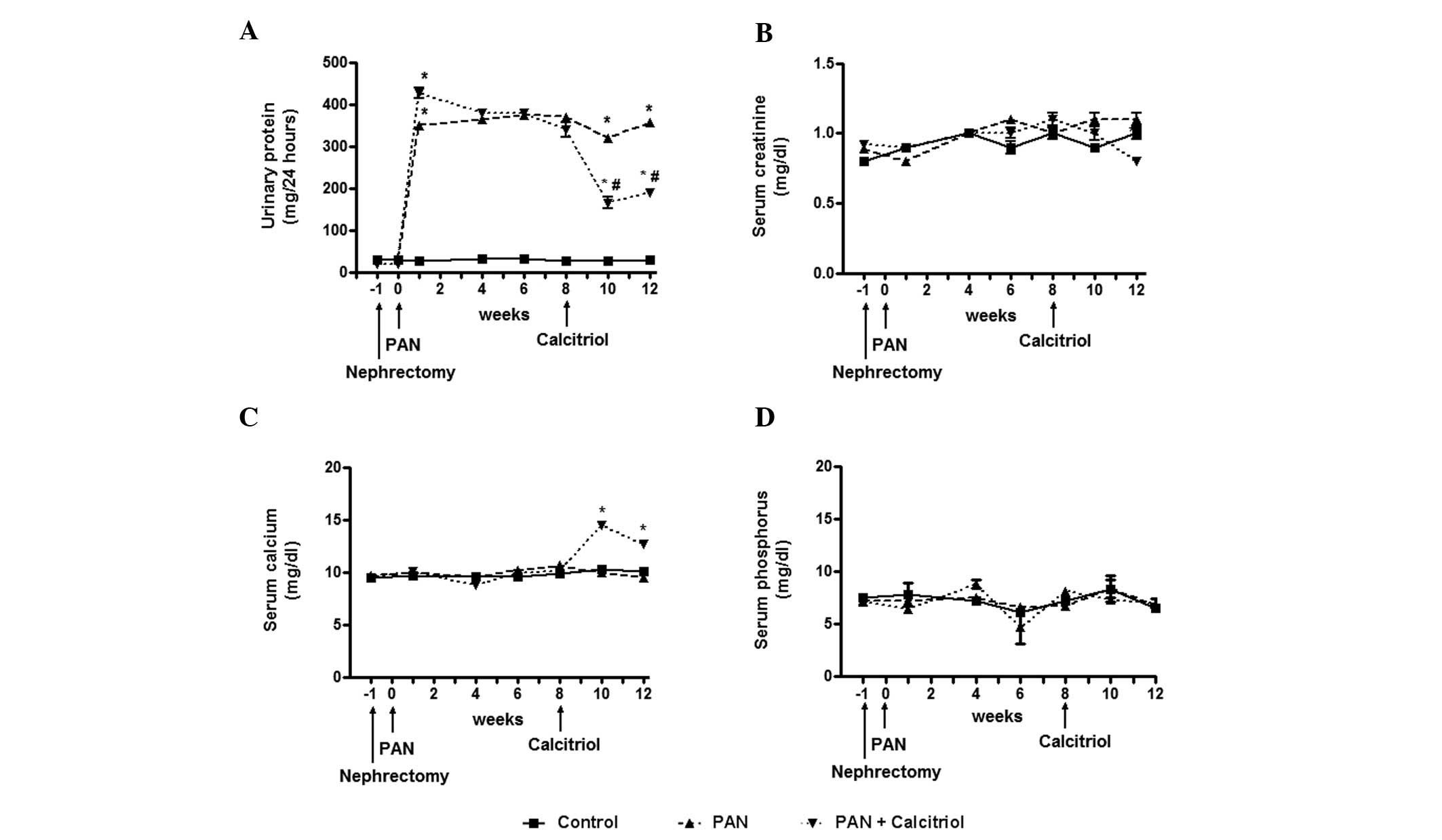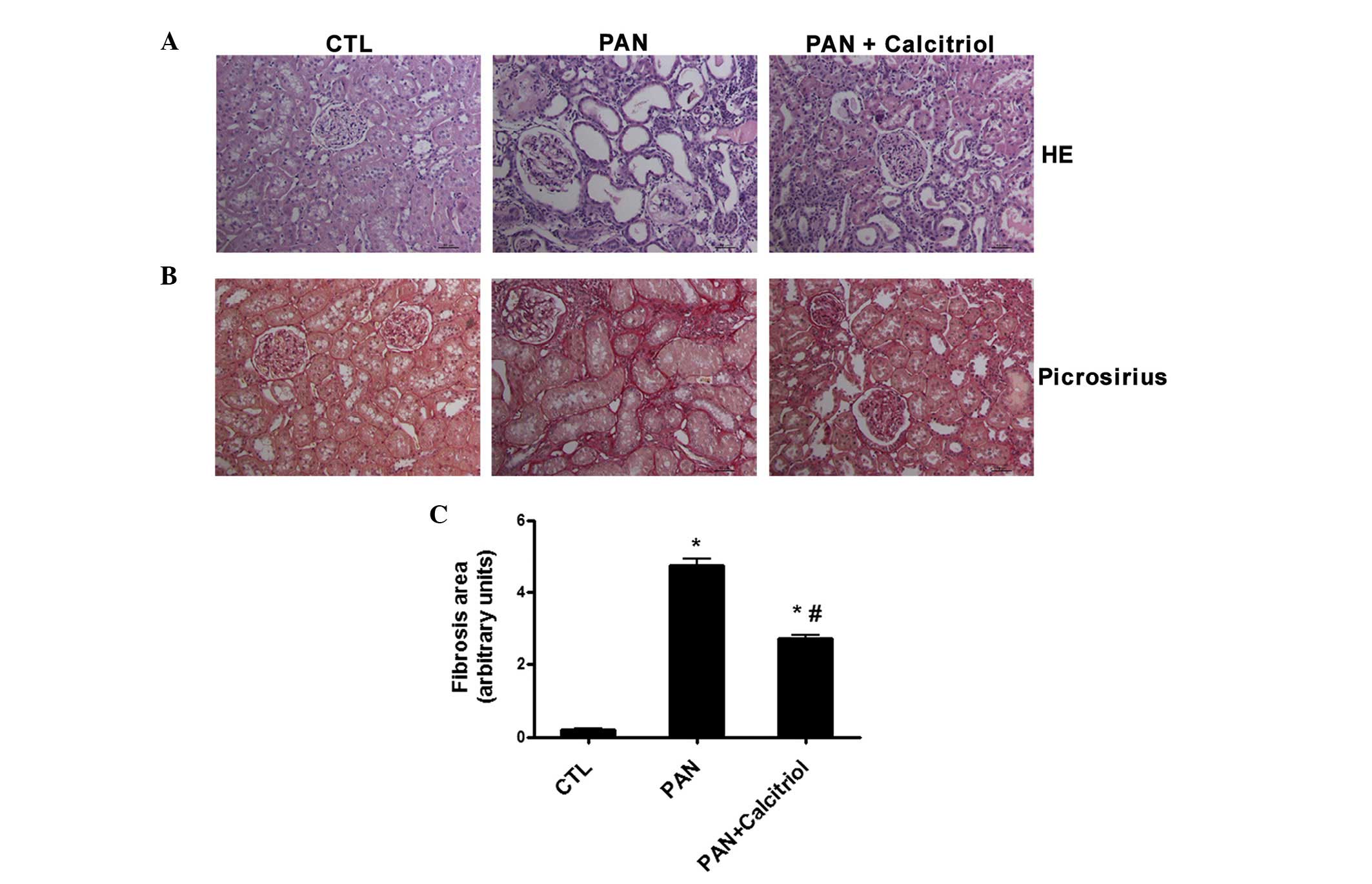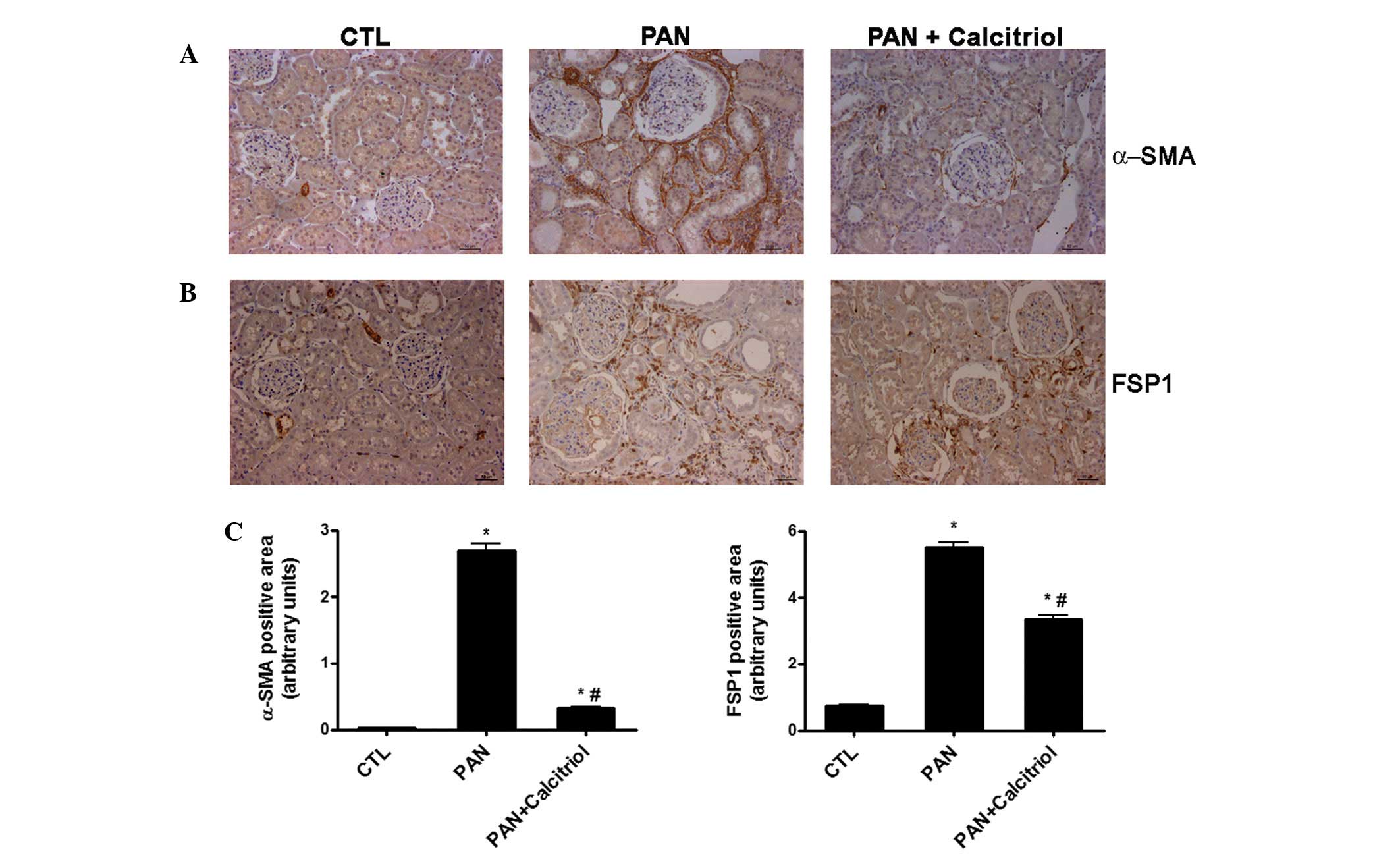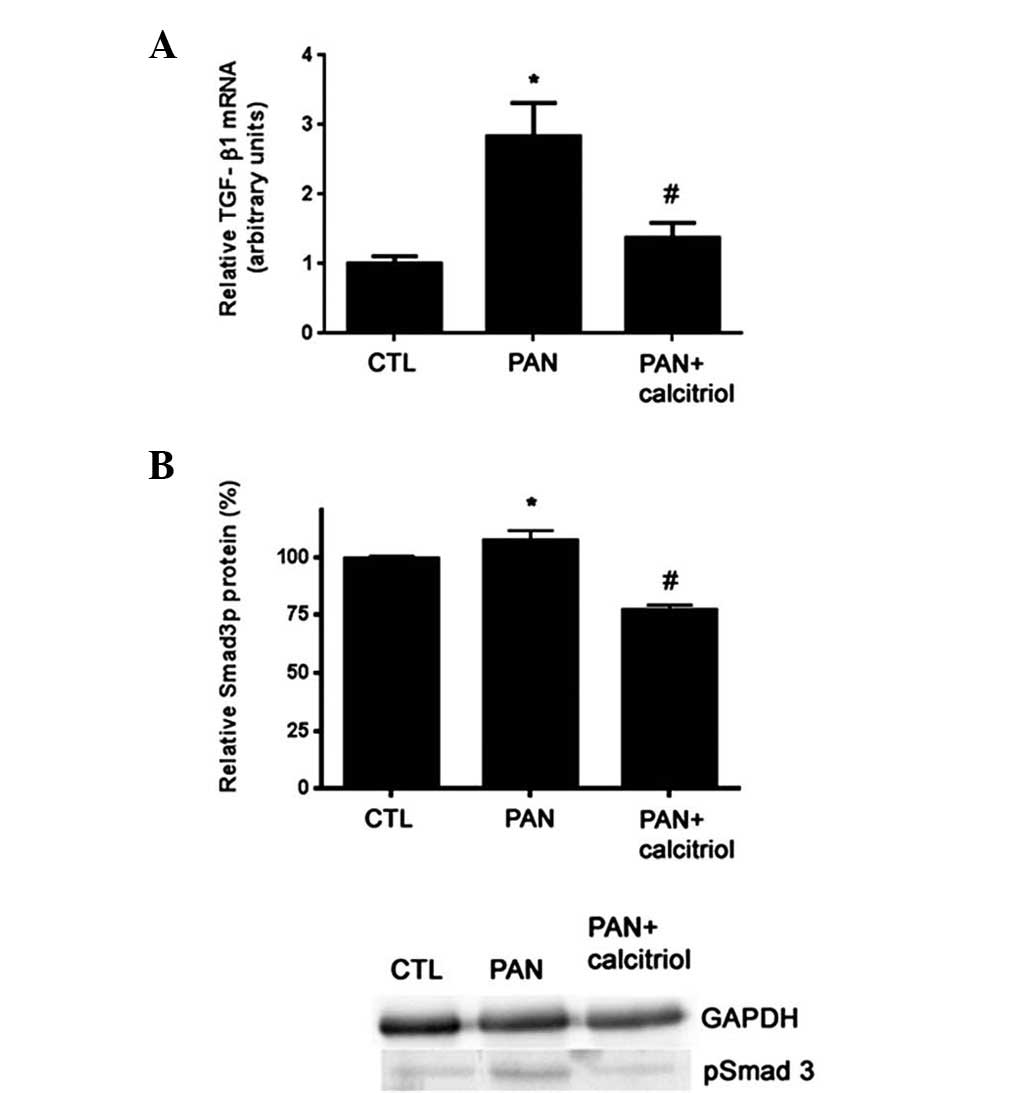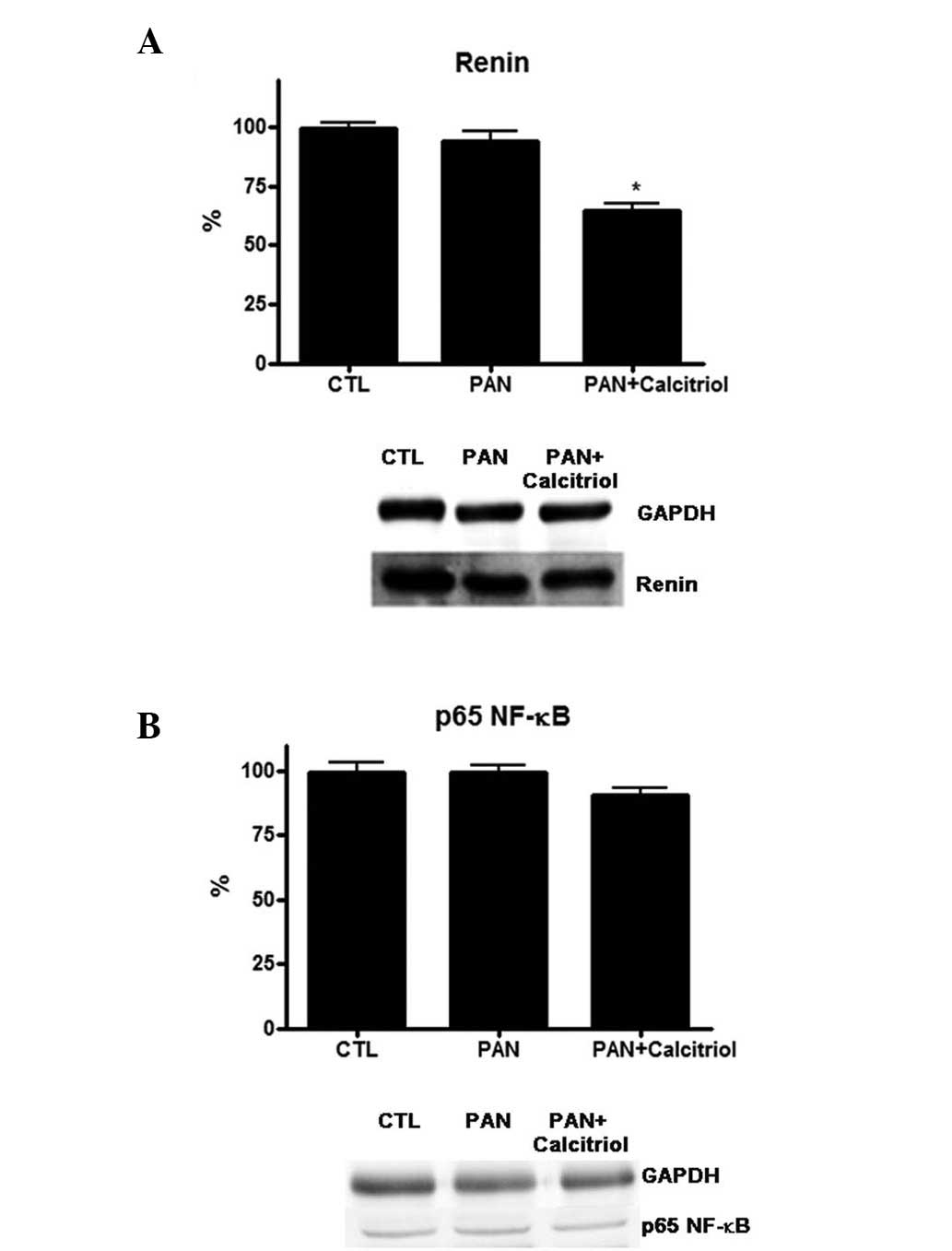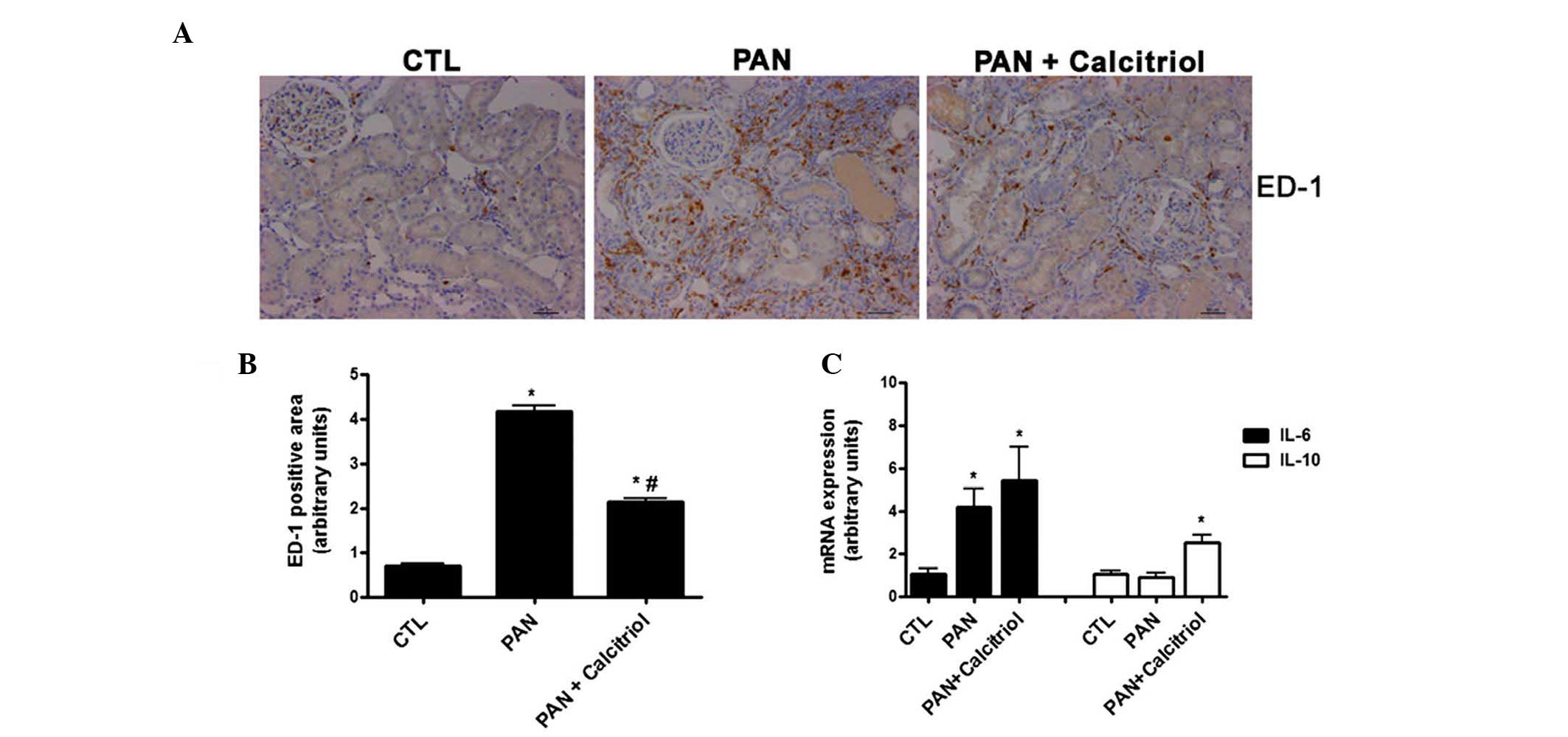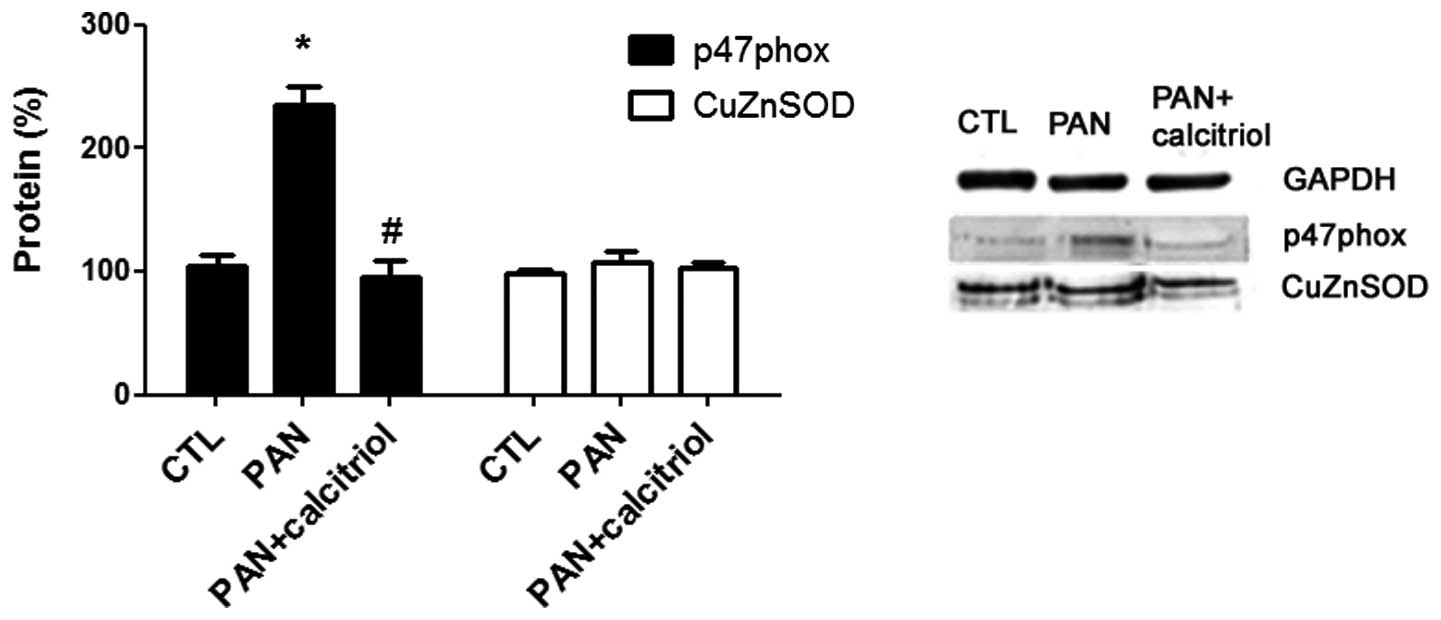Calcitriol ameliorates renal damage in a pre‑established proteinuria model
- Authors:
- Published online on: March 27, 2015 https://doi.org/10.3892/mmr.2015.3555
- Pages: 1009-1015
-
Copyright: © Maquigussa et al. This is an open access article distributed under the terms of Creative Commons Attribution License [CC BY_NC 3.0].
Metrics: Total
Views: 0 (Spandidos Publications: | PMC Statistics: )
Total PDF Downloads: 0 (Spandidos Publications: | PMC Statistics: )
Abstract
Proteinuria is critical in the tubulointerstitial changes that ultimately lead to renal insufficiency. Increased protein filtration has direct toxic effects on tubular epithelial cells, leading to epithelial mesenchymal transition (EMT) to a myofibroblast phenotype. Angiotensin II and transforming growth factor (TGF)‑β1 are the main mediators of EMT. Calcitriol may exert a potential renoprotective effect by reducing the activity of the renin angiotensin system by suppressing renin gene expression and also by inhibiting the proinflammatory nuclear factor‑κB pathway. The present study investigated the benefits of calcitriol treatment in a puromycin‑induced proteinuric nephropathy model. Uninephrectomized adult male Wistar rats received intraperitoneal administration of a single dose of puromycin (100 mg/kg) or vehicle. After eight weeks, the animals were divided into two groups and received vehicle or calcitriol (0.5 µg/kg) for four weeks. The vehicle‑treated, proteinuric rats developed progressive proteinuria and tubulointerstitial fibrosis after 12 weeks. Increased collagen deposition and fibrosis were significantly ameliorated by calcitriol treatment. Calcitriol was effective in preventing an increase in the EMT markers, α‑smooth muscle actin and fibroblast‑specific protein 1, reducing macrophage infiltration as evidenced by levels of ED‑1. In addition, calcitriol increased the anti‑inflammatory cytokine interleukin‑10 and reduced the pro‑oxidant p47 phox enzyme. These effects were paralleled by a reduction in TGF‑β/Smad3 expression. Calcitriol may have therapeutic potential in the proteinuric nephropathy model used in the present study by inhibiting the TGF‑β1 axis.



